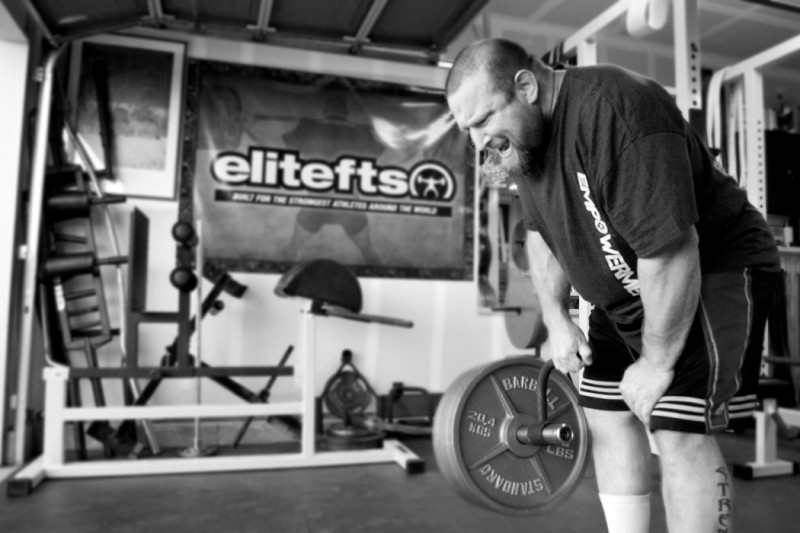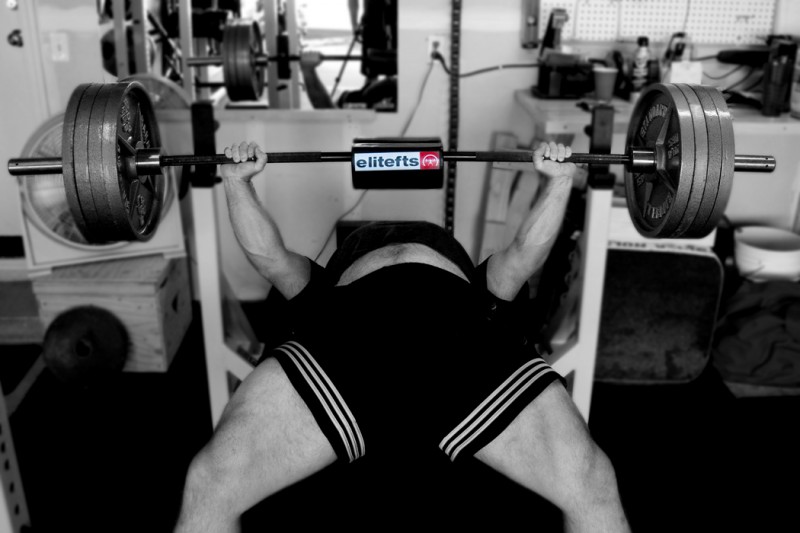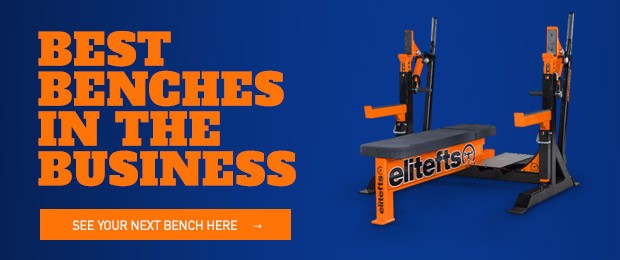
They say we are only as strong as our weakest link, and I believe this to be true. I believe it so deeply that it has always been a key, fundamental part of my training. In order to increase my strength in the fastest way possible, I must always be finding and improving my weak links. As simple and extremely important as this principle is, I continue to see so many lifters overlook or misunderstand it year after year.
I have always kept my training pretty basic, and I have done this by breaking things down to the simplest factors. There’s no need to complicate something that is not complicated. When I think about training my weakest links, I break it down into three components. I can hit them with supplemental work in the form of general strength training, which would be 3 or 4 sets of 8 to 12 reps. I can hit them with low reps and heavier weights, shooting for 3 to 5 sets of 5 to 6 reps. Lastly, I can hit them with full max-effort movements for a one-rep max. All these ways have their pros and cons, but they all definitely work. I use them all throughout the course of my training.
Using supplemental work in a general strength training format is the most common way I see lifters train their weak areas — that is, when I actually see it happening. This method is very basic, tried and true. Once you know your weak muscle groups, you can pick one or two movements that target the weak muscle group specifically and work them in a basic 3 x 10 set rep scheme. Lifters have used this method for ages and it always produces results. I constantly pick my supplemental work based on my weak links and work them in this manner. It will definitely strengthen the weak muscle groups, but I have always questioned if it really translated into fixing the weakness in a one-rep max in the three main lifts. So, I think a possible downfall of this method has to do with the amount of weight/effort involved.
RELATED: elitefts Classic: How to Set Up A Program — A New Look at Weak Points
I also feel some thought has to be given to the actual movement used in order to benefit the most from this method. Strengthening a muscle in a specific plane may not transfer much when it comes to one of the main three lifts, or at least not in the most efficient way. For example, I have never found a basic triceps pushdown to transfer over very well to the bench press. If triceps strength is a weak link in the bench, I feel high board close-grip work, close-grip bench with bands, dumbbell rollback triceps extensions, or JM presses are a much better choice. These will transfer new strength gains more directly into the movement we are trying to increase.
I believe it is also important to consider the muscle groups that work together and in correct firing order of each other. In the same example, you have JM presses (Dave Tate style) and dumbbell rollback triceps extensions that help train the correct firing order of the lats and triceps in the bench press. Basically, this helps mimic the movement to not only work on strengthening the weak muscle group but to help strengthen it in the correct firing order.
This method also happens to work very well if your weakness is a technical issue. Let’s say one of your weaknesses is focusing on keeping the upper back tight in the bench. All the exercises I listed mimic the bench so, while working your triceps, you can also work your technique weakness with the benefit of more reps than you do on max effort type work. With all those triceps exercises I listed, you will be setting up just like you do when you’re benching. It is crucial to keep the upper back super tight and use your lats. So, your upper back will be set up the same, but your arms may be doing a slightly different movement. This is perfect to work on the upper back control and technique for an extended duration while also training the triceps. I believe the supplemental method for strengthening weaknesses is a very strong method if used correctly, meaning picking more movements that work in similar planes with similar musculature involvement. When technique or muscle control issues are a weakness and the same rules are followed, I see this as a very valid method also. I have only one substantial concern with this: how much carryover is there to a one-rep max lift? This is the ultimate purpose of trying to correct or strengthen these weaknesses.
The next method is doing three to five sets of 4 to 6 reps with a supplemental movement. This is very similar to what I just described, except the number of reps are fewer so you can increase the weight. Again, I think it is important to pick the right exercise for the weakness that is in the correct plane with similar musculature involvement. For me, one of the biggest bonuses to this style is the added weight. Again, we are working on the weakness of a movement for a one-rep max, so increasing the weight just makes sense. This can also be done as a main max-effort-type movement just with higher reps, say for one set of 3 to 5 reps. With technique weaknesses, this style is also good for the same reason: more weight. The proper technique has to be held with a max load, so working it with light weight is only going to go so far. The technique needs to be challenged with heavier weights, yet with this style, there are still some reps to help reinforce muscle memory and longer duration under tension. I have used this style of training on my weaknesses with great success throughout my lifting career.
The third method I use is the one that gets overlooked the most: max effort work specifically for the weakness. Lots of lifters use max effort work with conjugate training, but more times than not I see they are just trying to switch up exercises with little to no thought about weaknesses. This is a huge mistake that decreases efficiency in gaining strength in a specific lift. Every max effort lift should be chosen based on the weakest link at the time.
For example, if a lifter has a middle-back weakness, they can strengthen it with a specific max-effort movement. Cambered or SS Yoke bars for any good morning variation are excellent movements to help strengthen this specific weakness. Even if the weakness is more of a technique or musculature control issue, these movements will help strengthen it. The main reason I always use this method is very simple: I need to strengthen this weakness in a one-rep max movement, so why wouldn’t I want to strengthen that weakness under the same stressors? I can strengthen a muscle group with higher rep work, but this may still not strengthen it enough to hold up under a one-rep max in a specific movement. Using the example of a weak middle back, I could do good mornings with a safety squat bar for 3 sets of 10 reps in my supplemental work and it will make my middle back stronger, no doubt. Will that new strength make it strong enough to handle the stress it needs to in a one-rep max squat or deadlift?
Again, it just makes sense to me to also work this weakness under the same stresses I want to strengthen it for in the first place. It is very easy to incorporate this principle in all the standard principles of conjugate training. The way I learned conjugate was to always factor in the weaknesses, and that was one of the principles of the method. It does not appear many lifters learned it the same way as I did, though.
Fixing the weak link is a key, fundamental principle of strength training. It is a principle that we will always need to be aware of and be focused on. We will forever be chasing our weakest link, because it will always be evolving. Once we fix a weak link, another will appear. The faster we can fix that one the faster our lifts go up, and so on. This makes it such an integral part of every training program.
If this is not part of your training program, you could even say the weak link in your program is that you do not account for your weakest links. There are many ways and theories on how to train these weak links. In this article, I described how I broke it down into what I see as the three most effective methods. They all have benefits, and I have always incorporated all three methods in my training. Really, all three methods are standards for strength training, and I have always used them with success, so why not use them in terms of training my weakest link, too? I admit the max effort method has always had the best carryover for me, but they all still have their place in my training.
“What is my weakest link, and how am I going to make it stronger?”
This is a question all lifters should be asking themselves before every training session.













3 Comments